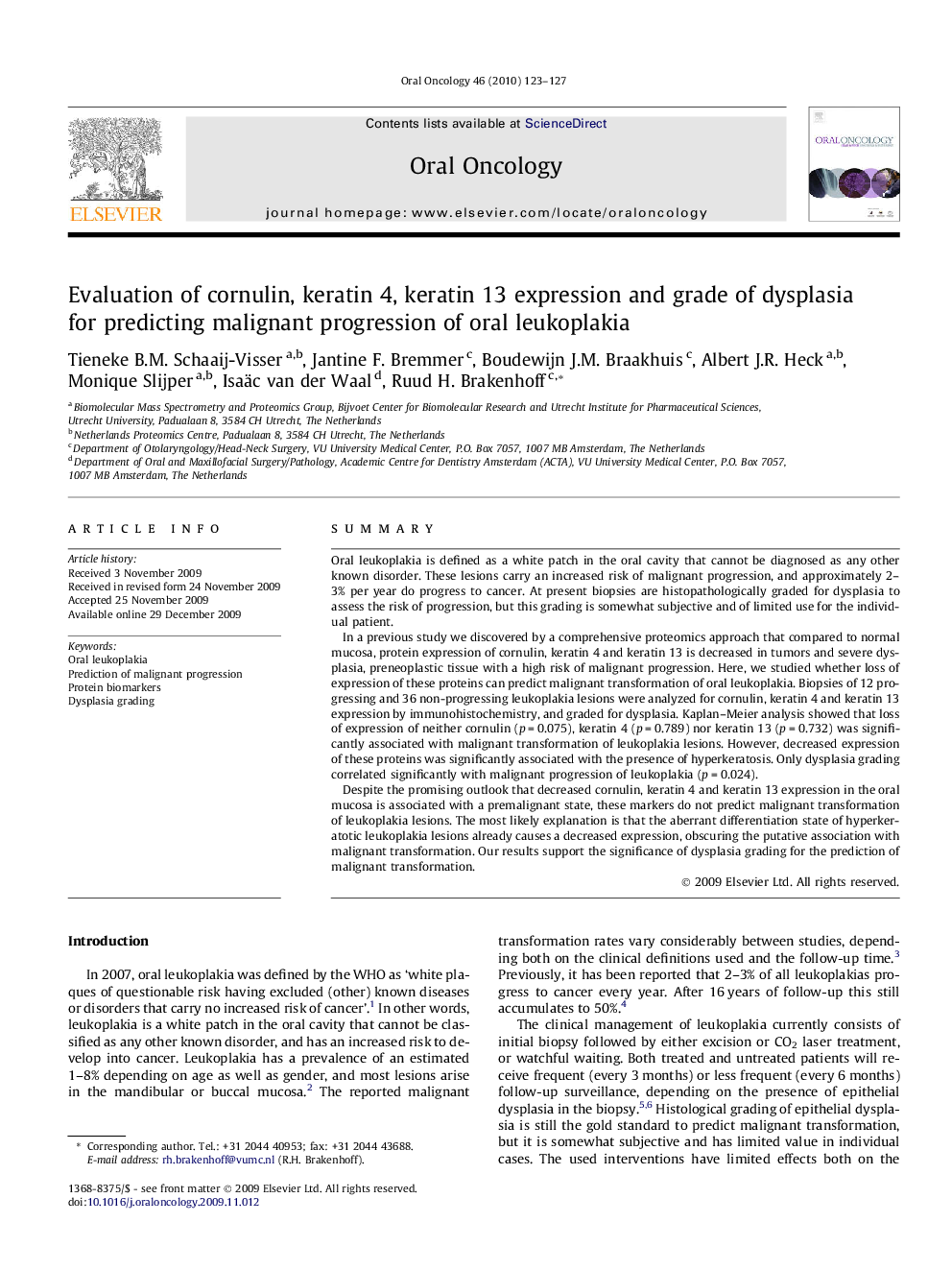| Article ID | Journal | Published Year | Pages | File Type |
|---|---|---|---|---|
| 3165242 | Oral Oncology | 2010 | 5 Pages |
SummaryOral leukoplakia is defined as a white patch in the oral cavity that cannot be diagnosed as any other known disorder. These lesions carry an increased risk of malignant progression, and approximately 2–3% per year do progress to cancer. At present biopsies are histopathologically graded for dysplasia to assess the risk of progression, but this grading is somewhat subjective and of limited use for the individual patient.In a previous study we discovered by a comprehensive proteomics approach that compared to normal mucosa, protein expression of cornulin, keratin 4 and keratin 13 is decreased in tumors and severe dysplasia, preneoplastic tissue with a high risk of malignant progression. Here, we studied whether loss of expression of these proteins can predict malignant transformation of oral leukoplakia. Biopsies of 12 progressing and 36 non-progressing leukoplakia lesions were analyzed for cornulin, keratin 4 and keratin 13 expression by immunohistochemistry, and graded for dysplasia. Kaplan–Meier analysis showed that loss of expression of neither cornulin (p = 0.075), keratin 4 (p = 0.789) nor keratin 13 (p = 0.732) was significantly associated with malignant transformation of leukoplakia lesions. However, decreased expression of these proteins was significantly associated with the presence of hyperkeratosis. Only dysplasia grading correlated significantly with malignant progression of leukoplakia (p = 0.024).Despite the promising outlook that decreased cornulin, keratin 4 and keratin 13 expression in the oral mucosa is associated with a premalignant state, these markers do not predict malignant transformation of leukoplakia lesions. The most likely explanation is that the aberrant differentiation state of hyperkeratotic leukoplakia lesions already causes a decreased expression, obscuring the putative association with malignant transformation. Our results support the significance of dysplasia grading for the prediction of malignant transformation.
